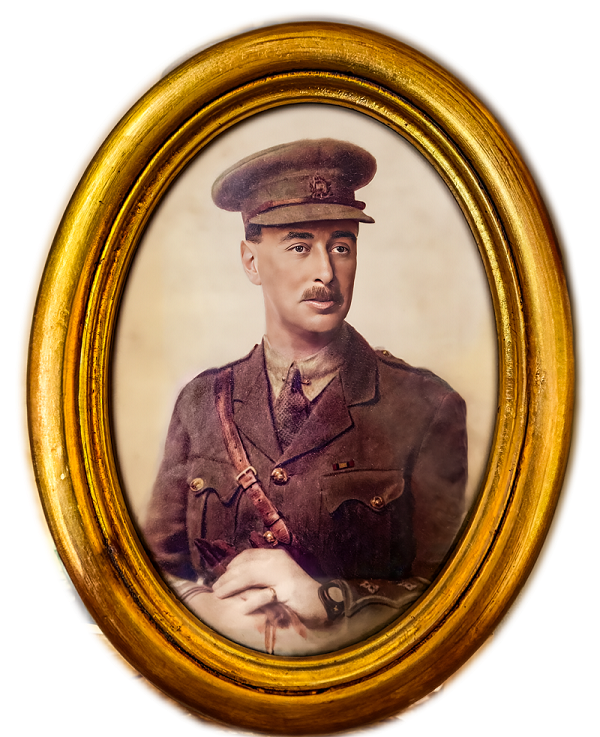VIA Ottawa – National Defence / Canadian Armed Forces
The Department of National Defence and the Canadian Armed Forces (CAF) have identified human remains recovered in Vendin-le-Vieil, France, as those of Lieutenant Francis Henry Hemsley, a Canadian soldier of the First World War. The identity was confirmed through historical, genealogical, anthropological, archaeological and DNA analysis.
Francis (Frank) Hemsley was born in Ealing, Middlesex, England, in 1880, one of seven children of Alexander and Ellen Hemsley (née Streeten). He served as a Trooper with the 35th Squadron, 11th Battalion Imperial Yeomanry, from 1900 to 1901 during the South African War. In 1906 he married Adina Cresswell Hebden and they had two children before he immigrated to Canada in 1911. His family joined him a year later and a third child was later born to them. They farmed near Prince Albert, Sask., before he enlisted. He was also a member of the 52nd Prince Albert Volunteers militia regiment, receiving his militia commission as a lieutenant in December 1915.
In February 1916, in Winnipeg, he joined the 183rd Battalion (Manitoba Beavers) as a lieutenant, at the age of 35. Lieutenant Hemsley sailed for Liverpool, England, in October and after training with the 108th Battalion, Canadian Expeditionary Force (CEF), and the 14th (Manitoba) Reserve Battalion, CEF, during which he qualified as a Lewis gun instructor, he became a member of the 16th Battalion (The Canadian Scottish), CEF, in April 1917 and joined the unit in the field in France in May.
The 16th Battalion fought in the Battle of Hill 70, which began on August 15, 1917. In the period August 15-17, the Battalion suffered 257 casualties, including 62 who were killed. Lieutenant Hemsley was reported killed in action on August 16, 1917, at the age of 37. He was buried, but the location of his grave was later lost.
The CAF has notified the family of Lieutenant Hemsley of his identification and is providing them with ongoing support. His burial is planned for July 2024, in the Commonwealth War Graves Commission’s Loos British Cemetery in Loos-en-Gohelle, France. He will be laid to rest by members of The Canadian Scottish Regiment (Princess Mary’s) from Victoria, B.C., and with his family and representatives of the Government of Canada in attendance.
Quotes
“We remember and honour the courage of those who have served our nation in wartime, and the sacrifice of the families they left behind. The passage of time does not diminish the price they paid. To the family of Lieutenant Hemsley, know that Canada honours him and is grateful for his service.”
– The Honourable Bill Blair, Minister of National Defence
“Lieutenant Hemsley was one of many brave Canadians who left their home and family behind to serve during the First World War. We remember his service and sacrifices during the Battle of Hill 70, and continue to remember all the brave Canadians who served beside him and who sacrificed so much to serve our country. Lest we forget.”
– The Honourable Ginette Petitpas Taylor, Minister of Veterans Affairs and Associate Minister of National Defence
Quick facts
- Lieutenant Hemsley is commemorated on the Canadian National Vimy Memorial, erected in memory of Canadian soldiers killed in France during the First World War who have no known grave.
- In August 2012, human remains were discovered by a bomb disposal unit clearing ordnance from a construction site in Vendin-le-Vieil, France. Alongside the remains were a few artifacts, including fragments of a gas mask and helmet and a badly damaged pair of boots. Several buttons clearly marked with “16th Battalion, Canadian Scottish Regiment” were also found.
- Through historical, genealogical, anthropological, archaeological, and DNA analysis, and with the assistance of the Canadian Museum of History, the Casualty Identification Review Board was able to confirm the identity of the remains as those of Lieutenant Hemsley in February 2024.
- Since it was founded in 2007, the CAF’s Casualty Identification Program has identified the remains of 36 Canadians. In 2019, the Program officially took on the additional responsibility of identifying the graves of Canadian service members buried as unknowns and has since identified 12. There are currently 42 active investigations involving remains, and 39 involving graves.
- Veterans Affairs Canada works with the Casualty Identification Program to identify next of kin and supports the participation of the two closest next of kin in the burial ceremony overseas, so that they might understand more of the story and experience of their lost family member.
- The Commonwealth War Graves Commission commemorates the 1.7 million Commonwealth servicemen and women who died during the two world wars. Using an extensive archive, the Commission works with its partners to recover, investigate, and identify those with no known grave, in order to give them the dignity of burial and the commemoration they deserve.
-via Canada

